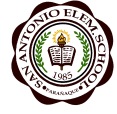GRADE THREE LAC SESSION – DIGITAL ELLN MODULE 3 LESSON 3
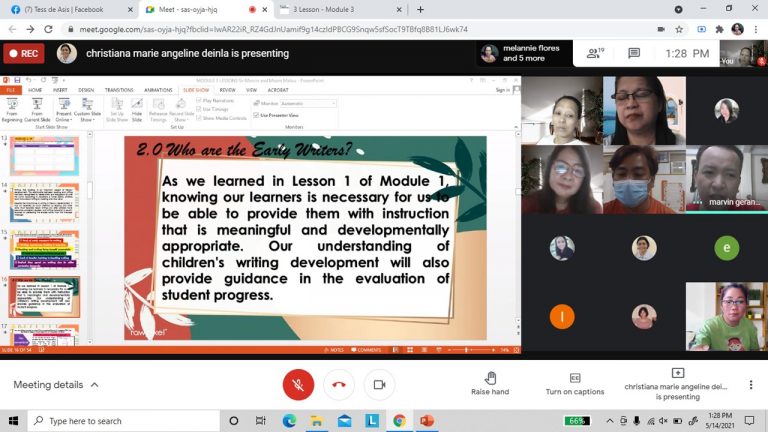
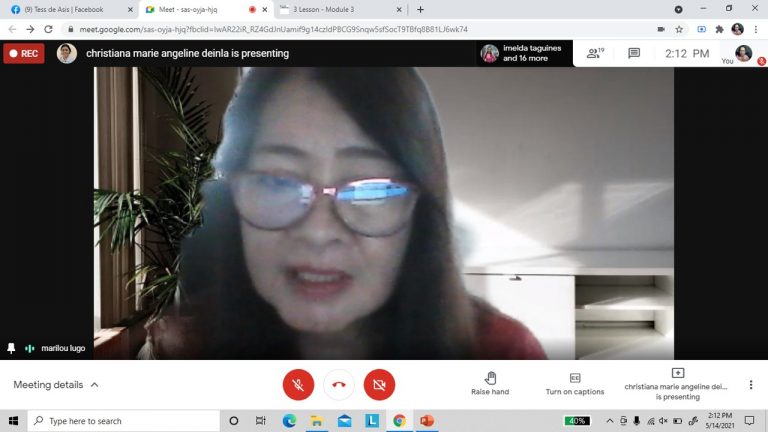
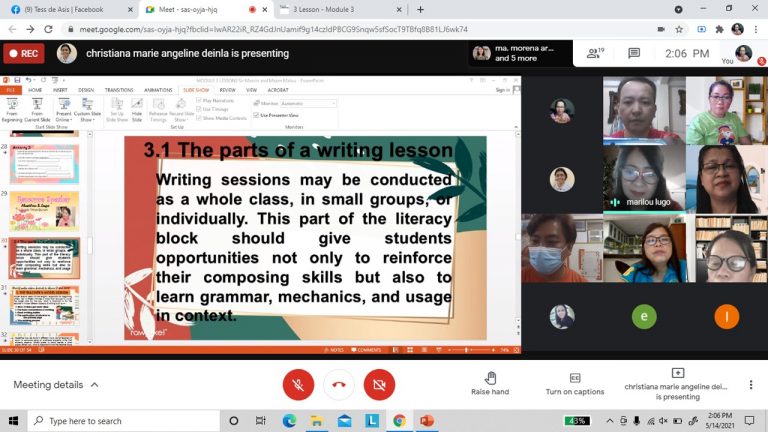
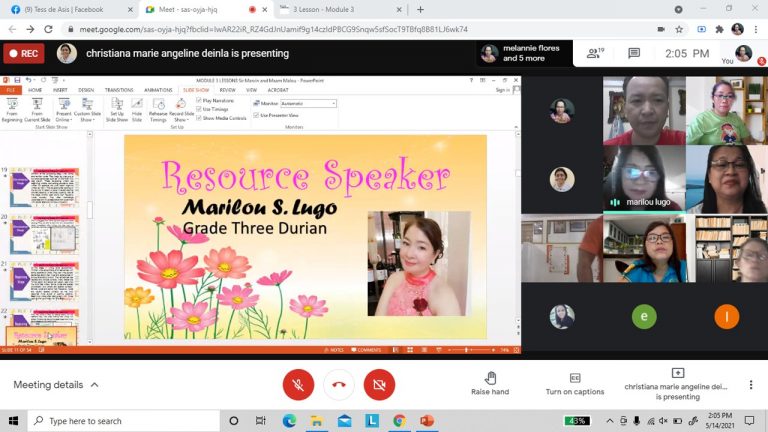
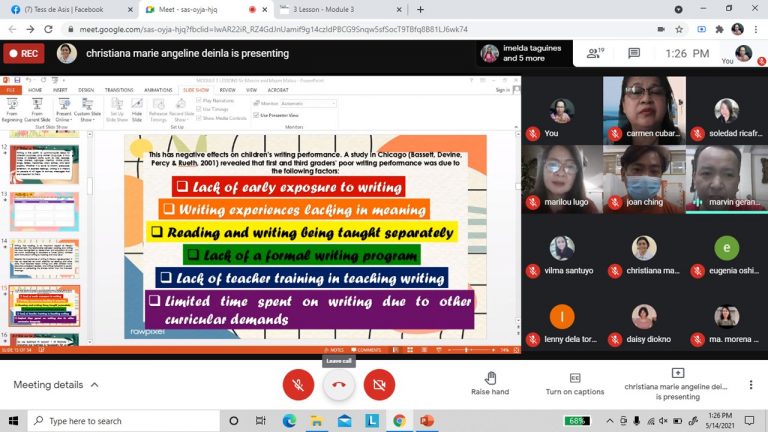
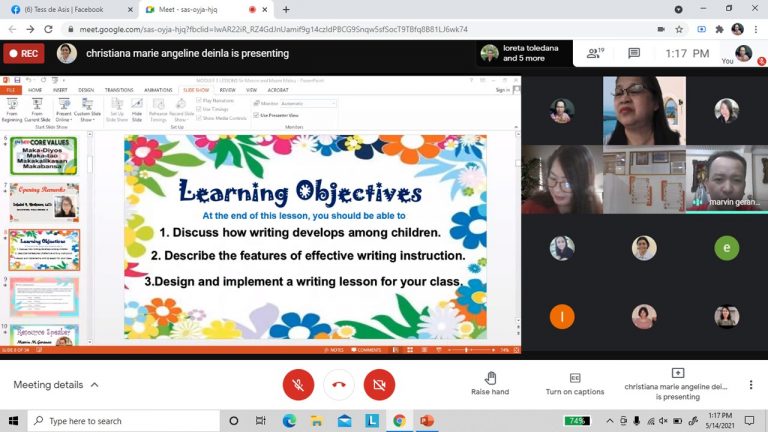
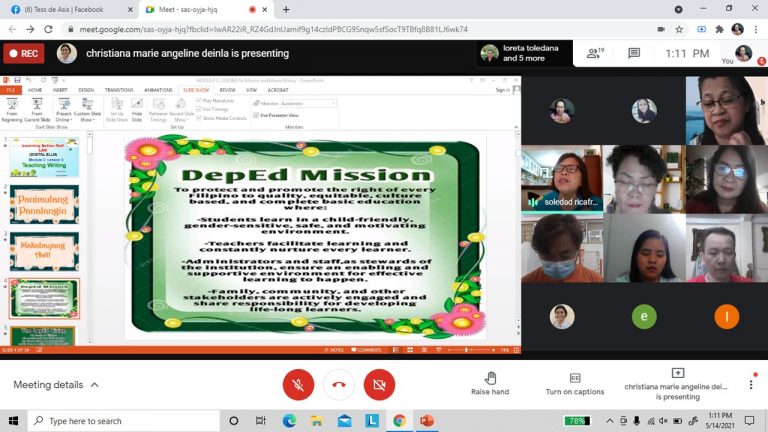
The LAC Session started with the singing of a nationalistic song and was followed with an opening prayer at 1:00 P.M. which were taken cared of by Mrs. Daisy S. Diokno and Mrs. Melannie A. Flores respectively. The recitation of the Vision, Mission and Core values of the Department of Education was led by Mrs. Vilma S. Broso.
Ma’am Soledad R. Ricafranca, one of the able grade three master teachers gave her Welcome Remarks. She encouraged everyone to become more effective teachers in teaching learners to read with the inputs gained in the LAC session on Digital ELLN.
The moderator, Mam Carmen A. Cubarol, introduced the LAC facilitators, Mrs. Marilou S. Lugo and Mr. Marvin M.Geraneo. Module 3, Lesson 3 was about Teaching Writing. The first LAC facilitator was Mr. Marvin M. Geraneo. He discussed the History of Writing and what is the basis for this activity The Pre-Lesson Activity was presented which was a reflection on teachers’ attitude toward the different strategies and approaches used to teach writing in K-3 classes. He first discussed the important things when teaching children how to write. It is easier for teachers to distinguish the writing ability of a child if you know the so called Early Writers and also Writing, like reading, is an important aspect of literacy development. The relationship between reading and writing has been recognized by researchers and educators all over the world. According to Abadiano & Turner (2002), children learn more about writing by reading and vice versa. Children enjoy varied fun-filled activities. Creating Idea is important in beginning writing for learners.
Despite the importance of writing in literacy development, it has not received as much attention as reading and other skills. Most teachers teach writing only after children have become competent readers. And writing instruction is usually focused on perfecting the strokes rather than the intended message. As early as grade one to three, children have difficulty on writing. This has negative effects on children’s writing performance. As we learned in Lesson 1 of Module 1, knowing our learners is necessary for us to be able to provide them with instruction that is meaningful and developmentally appropriate. Our understanding of children’s writing development will also provide guidance in the evaluation of student progress. How do children develop as writers? The International School of Azerbaijan (TISA) has identified six stages in the development of writing skills in children. And these are pre- conventional stage, emerging stage, developing stage, beginning stage and expanding stage. Sir Marvin also stressed that Children should see writing as a meaningful experience and not just a motor activity that shows one’s handwriting, spelling, and grammar. Children need to write for authentic purposes and real audiences, such as labeling one’s things, making grocery lists, writing diary entries, composing a letter for a loved one, and making posters.
The second LAC facilitator was Mrs. Marilou S. Lugo. She started with an overview of her topic on the parts of a writing lesson. Effective teachers are aware of the diversity of their learners inside the classroom, a single instructional approach will not be sufficient when teaching heterogeneous learners. Writing sessions may be conducted as a whole class, in small groups, or individually. This part of the literacy block should give students opportunities not only to reinforce their composing skills but also to learn grammar, mechanics, and usage in context. The writing sessions are the following teacher’s model lesson, student’s writing time and sharing time. Another factor she discussed is the Characteristics of good writing instruction which is essential to impart to the pupils your idea of what they are going to write or do. Good writing instruction is informed by the needs of the students as well as the school curriculum. This information should guide and shape the teacher’s decisions on what to teach students. The teacher’s feedback is also crucial in the learning process.
Did you notice how Teacher Rica gave corrections and immediate feedback to the class as the writing task progressed? From that lesson, she already observed which of her students needed more help in letter formation, spelling, proper capitalization, and the like. Mam Lugo reiterated this.
In Assesing , Mam Lugo said Assessment in writing should focus on two important aspects: process and product. Paying attention to the students’ writing product and process helps teachers gain a fuller understanding of their students. When teachers know their students well, they can plan the instruction better.
Two ways of assessing writing that include both process and product are writing portfolios and observation.
She discussed the difference between portfolios and observation . It may be helpful to include students when evaluating sample works in their portfolio. The teacher may discuss with students their goals for writing as well as what their needs are (Gunning, 2002). Below are some questions that teachers may ask their students when discussing their portfolio: like What is hard for you in writing? or What do you like best in writing etc. Teachers may use a rubric to measure the writing ability of learners as reflected in their actual writing samples.
In observation , When students enter your classroom, they display literacy skills at varying levels. Some can already read and write grade-level words, while others are just beginning to learn the foundations of reading and writing. Teachers should observe children as they write, and keep a record of each student’s strengths and needs, in order to monitor their progress and provide appropriate instruction, including differentiated instruction if necessary.
Carefully observe how your students behave in different writing activities. Pay attention and give importance to the writing process, and not just the written products. She stressed the importance of modelling and correcting as what Teacher Rica said in the video earlier.
Sir Joan Ching gave the Closing Remarks. Then, the distribution of certificates to the LAC facilitators and to the participants followed. Mam Carmen Cubarol, the moderator, congratulated and thanked everyone for the success of the activity especially to the LAC facilitators, the Technical Working Group led by Ma’am Angel Deinla, Sir Joan Ching for the certificates, Ma’am Grace Esmeralda for the evaluation and Ma’am Amparo Lalas for the documentation. The session ended at 3:00 P.M.
– Mr. Marvin M. Geraneo – Teacher I
